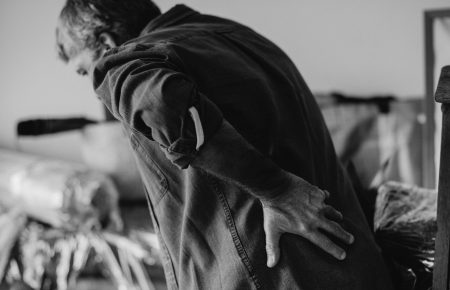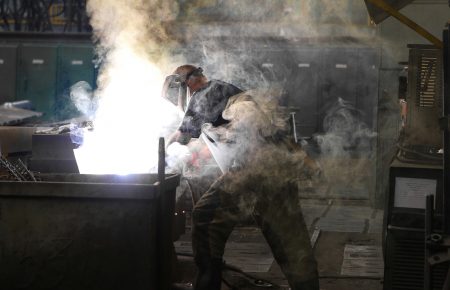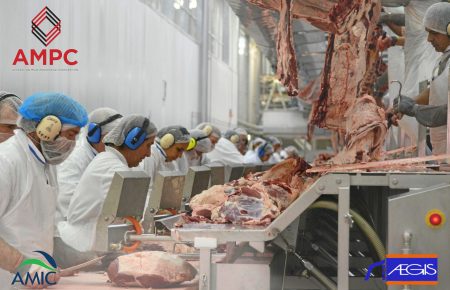By Simon Booth
“An independent review of the financial sustainability of the [Victorian Workers’ Compensation] scheme in 2020–21 concluded that the current financial trajectory is unsustainable”
– Victorian Auditor-General’s Report 2021-21:10 (November 2021)
“We must always remember that Workers’ Compensation is an insurance scheme with social responsibility. This is vastly different to a welfare scheme and we must always ensure that this point is appreciated, as it appears to be overlooked by the Ombudsman. In stark contrast to a welfare scheme, Workers’ Compensation is a direct driver of the state economy.
To fulfill its social responsibility, the scheme must remain funded and, as we have seen with the catastrophic increase in claims expenses since the 2016 Ombudsman’s report, this cannot occur if we jump at shadows and make drastic changes to the operation of the scheme based on politics, bad press and misplaced intentions.” – Simon Booth, Manager, Aegis Risk Management Services. Response to – Independent Review into the Agent Model and Management of Complex Claims, September 2020
The Victorian Workers’ Compensation scheme is failing. It has been for years, but for the last 15 years that failure has been isolated to its inability to effectively deliver an innovative approach to return to work for injured workers and employers, turning out the same lackluster results that we have seen for decades.
But in recent years it has been failing financially. As I have been pointing out to anyone who would listen since the 2018/2019 financial results were disclosed.
We even have a pretty table in our workbook “Engaging Doctors and Workers” outlining the decline in financial performance since the scheme made knee jerk changes following the Ombudsman’s statistically flawed reviews into the scheme. It’s one of the major reasons that we work with our clients to help them take control of their Workers’ Compensation programs.

With claims expenses once again exceeding $6 Billion for 2020/2021, the Victorian scheme has made underwriting losses of over $7 Billion dollars in just two years.

The deterioration of the Victorian scheme in recent years must be laid directly at the feet of both the Victorian Ombudsman for her statistically unsound reports and WorkSafe Victoria for capitulating to media and political pressure and implementing recommendations that have had an adverse impact on the financially viability of the scheme.
The result of these actions and inactions of the above has led to a scheme where Agents now lack the tools to effectively address injured worker motivation and compliance. A scheme where Agents would be too scared to use these tools if they had them out of fear of being called “immoral and unethical”, as a direct result of the two Ombudsman’s reports.
What is certain, is that none of the blame for the financial deterioration of the scheme should be aimed at the current Agents or the Agent model operating in Victoria. They have had no say in or control over the drastic changes to the scheme that have had such a devastating effect on its financial viability.
I know many of you will gasp in disbelief, that I, a devout advocate for privatisation would support the current agent model, but I do this for two reasons.
Firstly, they operate in a scheme where they must bow to their overlords and operate in the manner directed (A refusal to continue with this is the oft speculated reason for CGU exiting the scheme). As such, I cannot in good conscious, be party to scapegoating organisations whose only faults have been to follow directions they are contractually bound to follow.
Secondly, despite the declining performance of the Victorian Workers’ Compensation scheme, we continue to chase the ghosts created by the Ombudsman’s reports. Industry scuttlebutt suggests that as a result, WorkSafe Victoria are now exploring disposing of the Agent model altogether and taking everything in house.
In fact, if I was a skeptical man, I might speculate that this may have been the primary purpose of the 2020 review, conveniently titled “Victorian Workers’ Compensation System: Independent Review into the Agent Model and the Management of Complex Claims”
As much as Agent models have their flaws, removing them and putting our fates in the hands of WorkSafe, would be catastrophic for employers and the scheme that they are forced to underwrite.
If this is the intent, I am sure we could all agree that it would appear oxymoronic to put the state’s Workers’ Compensation claims in the hands of the very organisation, whose actions and inactions in recent years, have directly contributed to the current financial situation. The only change I can see occurring should this take place is significantly less transparency on claim actions for employers.
Do we not remember the early 2000’s, roughly 20 years into the government run scheme, when injured worker benefits were greatly reduced to address the unsustainable financial position of the Victorian scheme at the time?
Here we find ourselves, almost 20 years later, with an independent review identifying that the scheme’s current financial trajectory is unsustainable. If this is not addressed, will we again see reduction in injured worker benefits?
This was exactly what we identified in our response to the review into the agent model over a year ago:
Failing to address the significant deterioration of the Victorian Scheme in recent years will impact on the financial viability of the scheme itself. In the early 2000’s Victoria was forced to make sweeping changes to legislation, which adversely impacted injured worker benefits. These changes were made to rectify a failing scheme that had fallen billions of dollars into deficit.
If we continue down the current path in Victoria, we will see the scheme return to deficit. As Greg McCarthy identified with the South Australian scheme, you can only squeeze employers for so long before you are required to lock the average premium rate at a level substantially below the breakeven rate (South Australia – 2.75% v 3.34%).
In this situation, the outstanding claims liability will continue to grow, eventually leaving Victoria with no choice but to review injured worker entitlements and make further changes to ensure the ongoing viability of the scheme. These changes will once again, adversely impact on injured workers.
I am not sure what it is about Workers’ Compensation in Australia, but we fail to learn from our mistakes. We fail to look to the past before making changes for the future.
We saw this with iCare’s disastrous decision to go to a one agent model in 2018 with no thought to the previous failure of this approach in South Australia.
We see this now in the drastic changes to Victoria’s approach to claims management, where everything appears to be focussed on not upsetting the injured worker.
In this respect we can learn once again learn from the mistakes of South Australia. Greg McCarthy won an award for his white paper, “Insights for success in work injury insurance”, which outlined the issues they had faced in South Australia and how they overcame them.
Sometimes I feel like I am the only person who has read his paper, because the actions of regulators in recent years would suggest that no one appears to have listened to what he had to say.
The independent review mentioned referenced in the Auditor-General’s report identified that the unsustainable position of the scheme was caused by five main factors:
- An increase in the duration injured workers remain on the scheme due to softer application of capacity tests after recent Ombudsmen reports
- Poor and declining return to work outcomes
- An increase in the number and complexity of mental health related claims
- Sustained, unchanged average premium rates
- Investment revenue likely to decline.
Leaving mental injury claims aside, here are just a few of the insights provided by McCarthy that are relevant to Victoria’s current predicament.
An increase in the duration injured workers remain on the scheme due to softer application of capacity tests after recent Ombudsman reports.
“Culture meant that work capacity reviews were not implemented strictly in accordance with the legislation by those who though it to be too harsh and unfair.” – Greg McCarthy
And what have we seen in Victoria? The Ombudsman’s heavy reliance on Medical Panel outcomes to support her view of the scheme at the time.
She maintained her view despite the response from WorkSafe that identified:
“A Medical Panel is unlikely to conclude a worker has a capacity for suitable employment where they are over 55, their pre-injury job was physical, and they have limited transferrable skills.”
And the decision in Petrogas v Doolan & Ors, where Judge McDonald was scathing of the Medical Panel actually stating that:
“It is entirely unclear how, or on the basis of what evidence, the Panel reached [their] conclusion.”
“The likelihood of a worker obtaining employment is irrelevant to the question of whether employment in a particular role is suitable.”
In making their decision, Judge McDonald stated, “An order shall be made remitting the medical questions in respect of which the certified opinion was given to a differently constituted panel to be reconsidered in accordance with law.”
Poor and declining return to work outcomes
“Culture accepted that most claims would be disputed, so tempered claims management decisions based on assumptions regarding likely disputation outcomes.” – Greg McCarthy
The introduction of the WCIRS panel on the back of the Ombudsman’s recommendation has brought a fatalistic outlook by scheme agents.
The decisions of the WCIRS panel are heavily biased in favour of injured workers, 9:1 has been the general consensus across the scheme. Furthermore, the panel has made decisions that people with much more experience in the scheme than I, have been left bewildered by. With reports that some of these decisions have actually gone against legal precedent.
Given this, it is easy to understand why insurers are reluctant to make adverse decisions, if they believe that 90% of those will be overturned by the WCIRS panel.
And if there is no consequence to poor behaviour, why would injured workers fulfill their obligations to the scheme.
Poor and declining return to work outcomes
“The culture of the South Australian workers rehabilitation and compensation scheme was focused on entitlements, disputation and passive claims management. People felt entitled to stay on the scheme forever and felt they were denied their rights when attempts were made to move them off the scheme” – Greg McCarthy
With WorkSafe taking away the tools available to agents to manage injured worker motivation and compliance, the agents now do little more than manage the process of a claim, and are heavily reliant on the injured worker’s motivation and the health professional’s compliance with evidence-based medicine, to achieve a positive outcome.
Unfortunately, we work in a scheme that through its very existence reinforces time off work. This occurs through both the payment of weekly benefits and the requirement of workers to constantly justify these benefits by explaining how ill they are, which becomes a self-fulfilling prophecy.
Worse, are the situations where an EBA requires an employer to provide top up pay for a significant period, negating any hypothesised motivation provided by a step down in the worker’s weekly benefits.
Whether intended or not, this is also a result of the vilification of Scheme Agents in the Ombudsman’s reports.
The move to a passive claims management approach, as found in South Australia, will lead to nothing but the ruination of the scheme and a legacy of disenfranchised workers failed by the scheme that was meant to aid them.
As a society we understand that the complete removal of the stick in favour of the carrot is unlikely to provide the desired result. We understand that they should be used in equal measure, for too much of one, or not enough of the other, will not gain the required outcome.
This is what we have seen in the Victorian scheme in recent years, a reluctance to implement actions aimed at disrupting the compensation cycle. These actions are not only necessary to stop workers becoming trapped in the system but are essential to the financial sustainability of the scheme.
In their response to the Ombudsman’s report, CGU summed it up nicely.
“The draft report highlights and criticises the actions taken by Claims Consultants in trying to break the cycle of compensation and attachment to compensation entitlements, and in some cases those actions are highlighted in the report as provocative, unreasonable or inappropriate. However, the purpose of these actions is genuinely aimed to disrupt the compensation cycle and activate return to work opportunities.”
Poor and declining return to work outcomes
“When laws exist they are expected to be followed as passed by Parliament. . . legislative framework does not allow the public sector to decide what laws to follow or what laws to adjust in order to be in accordance with their own views” – Greg McCarthy
In an effort to appease the Ombudsman, WorkSafe have made sweeping changes aimed at improving worker satisfaction with the scheme. I have struggled to identify how any of these changes have positively impacted workers and return to work, with most appearing to be focussed on appeasing workers and allowing them to wallow in the scheme.
This is like allowing a child to do whatever they want. The child will be happy, but maladjusted.
The interesting component of this, is how changes of such magnitude can be made without composite changes to the legislation.
What would be wrong with WorkSafe stepping out of the way and allowing the Scheme Agents to simply apply the legislation.
Interestingly, we have not seen the same issues and frustrations occurring with Self Insured Employers who have been able to continue to apply the legislation without interference from either the Ombudsman or the regulator in the same way.
Sustained, unchanged average premium rates
“When considering whether a scheme can afford either a reduction in premium and/or an increase in benefits then for that scheme to remain sustainable and fully funded in the long term you CANNOT fund either premium reductions and/or benefit increases out of a surplus. Benefit increases and/or premium reductions should only be considered if there is a positive gap between the average premium rate (APR) and the breakeven premium rate (BEP) and you are confident that gap is sustainable. Ignore this at your peril.” – Greg McCarthy
As an industry we must view the softer approach taken by the scheme, which resulted in declining return to work outcomes and a significant increase in workers passing the 130-week mark, as effectively providing an increase in benefits.
Further impacting this, was the decision to pay those workers who were deemed to have a capacity at 130 weeks an additional 6 months of payments because of COVID.
Once again, these changes appear to have occurred, not through any well thought out process with an understanding to the impact to the scheme, but in an attempt to appease injured workers and their representatives.
Despite the poor results achieved following these changes, WorkSafe have decided to maintain the average premium rate at 1.272% despite the required breakeven rate being 1.501%.
As much as I would like to think this is WorkSafe choosing not to pass on costs to employers that were caused by their mismanagement of the scheme, I believe it is more politically motivated than it is altruistic.
Regardless of the reasoning, it is an unsound practice that can only lead to further financial strain on an already struggling scheme.
“But in Government hands, the average premium rate was set at 2.75% (even when the breakeven premium peaked at 3.34%), and the outstanding liability just kept increasing” – Greg McCarthy
Investment revenue likely to decline.
This gem of wisdom does not come from Greg McCarthy but from Patrick Snowball who was the CEO of Suncorp when I worked at GIO.
He identified early into his tenure that the organisation was reliant on investment income to make a profit and he made it clear that this was no way to run a business.
His directive moving forward was that the insurance divisions should make a profit based on the premiums that they gathered.
Yet we see too often with state funded Workers’ Compensation schemes, a reliance on investment income to fill shortfalls in underwriting income.
The difficulty, in both Victoria and NSW at the moment, where the poor financial position rests with unwanted and unneeded changes to the scheme, is should the regulators be allowed to make employers pay for their mistakes.
As such, I find the $500M+ contributed by the Victorian Government, whilst an unsustainable approach to the issue, a nod to the fact that the employers are not to blame for the current predicament.
However, we would be naïve to expect that the government will continue to prop up a failing scheme without asking employers to contribute to the ongoing losses.
What is missing from the issues identified through the independent review is the meddling of both the Ombudsman and WorkSafe with the scheme, as it appears that most of the changes made have occurred because an individual was unable to reconcile the requirements of the scheme with their own moral standpoint.
“Sometimes legislation establishes tough requirements that challenge a person’s moral principles. Work injury insurance operates in an insurance environment, but has social responsibilities. As a result, those social priorities may appear to be in conflict with the requirements of the legislation.” – Greg McCarthy
This is at the heart of what has led us to our current predicament, a scheme spiralling into financial ruin, because the legislation and the actions required to keep the scheme viable are at odds with an individual’s views of right and wrong.
The Ombudsman didn’t like what was happening and off the back of this wrote a scathing report and detailed a series of recommendations for changes to the scheme. These changes appeared to give little if any consideration to either the Act under which we operate or the need for the scheme to remain financially viable.
What the Ombudsman has failed to take into consideration, is that her moral standpoint is irrelevant to the scheme. Like everyone, she is entitled to her opinion, but the scheme does not care about opinions, it does not care about politics, and it does not care about feelings.
The scheme cares about a legislation, crafted by greater minds than mine to balance the entitlements of injured workers with the scheme’s financial stability.
The scheme cares about it’s a financial position and ensuring that it can meet the entitlements owed to injured workers under the legislation.
We forget the above at our own peril, because if we have learned anything from history (icare being the latest lesson), nothing good comes from messing with a Workers’ Compensation scheme.
It would appear that rectifying the current predicament should not be that difficult and only requires five simple things.
- Allowing the Agents to apply the legislation, as it was intended, without interference from Government
- Ensuring that others in the scheme, such as the Medical Panel, do the same
- Doing away with the WCIRS panel, it benefits neither the injured worker nor the scheme
- Ensuring, that in future, the scheme does not make changes, no matter how well intentioned, to appease individuals whose moral standpoint is at odds with the legislation
- Understanding that removing Agents from the scheme and handing over claims to WorkSafe is not the solution
Disclaimer: This article provides general advice and should not be considered legal advice or an insurance consultation. You should seek appropriate counsel for your own situation. In addition, this post is directed at people in Australia. If you are outside Australia, please be aware that the circumstances in your own country may be different.
























































